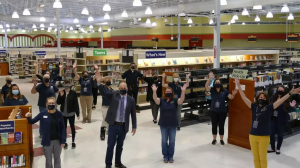Introduction
Maria Bonn

This text was created by the students of IS 510: “Libraries, Information and Society,” a required course in the Masters of Science in Library and Information Science degree program at the University of Illinois Urbana Champaign. 510 is intended to “Explore major issues in the library and information science professions as they involve their communities of users and sponsors. Analyze specific situations that reflect the professional agenda of these fields, including intellectual freedom, community service, professional ethics, social responsibilities, intellectual property, literacy, historical and international models, the socio-cultural role of libraries and information agencies and professionalism in general, focusing in particular on the interrelationships among these issues.” The class helps students prepare for a profession in libraries and other information professions, such as galleries, archives and museums, as well as those in the corporate sector. Information is everywhere. So are the many information professionals that have taken 510 (which used to be know as 502, but always “Libraries, Information and Society”) over the more than 35 years it has been part of professional education at the school of Information Sciences (which used to the Graduate School of library and Information Science!).
This text takes a step back and turns the students into teachers. The GLAMOROUS is intended to inform and educate students even earlier in their careers; undergraduates who are considering embarking on professional study in Library and Information Science. The graduates students in the section of IS 510 in the fall of 2023 offer those undergraduates many insights into the world of information science and the work that it supports.
Part 1 explores personal and social drivers for entering this field of study and work, then moves on to a sample of foundational knowledge and basic principles at work in information science.The book then moves on to give insight into some of the daily work of information professionals, both in descriptive essays and by letting those professionals speak for themselves in a rich set of interviews. Students reading the book are then offered some detailed insights into specific kinds of organizations where they might find themselves or where they aspire to be. Some of the chapters focus on specific kinds of expertise in the context of libraries, expertise badly needed by libraries: marketing, supporting nontraditional services like maker spaces, customer service and the perennial information work of organizing information.
The book concludes with a very practical look to the future for aspiring information professionals, addressing job preparation and security, then guiding aspiring undergraduates through the immediate next steps of applying for a professional program in library and information science.
Teaching is often the best way to learn. The authors of this textbook have been immersed in learning by teaching. This teacher, who asked those students to do that work and who watched the effort of building the book can certainly testify to having learned a great deal from those students who are the authors of this text.
Introductions often conclude with acknowledgements. I would like to thank Dainy Bernstein for joining me as instructor on short notice and with little time to prepare and who has been an always supportive and informative contributor to its instruction. I would especially like to thank the students of IS 510 in the fall of 2023 for their good humor in exploring this kind of teaching and learning and for all that they have taught me.



